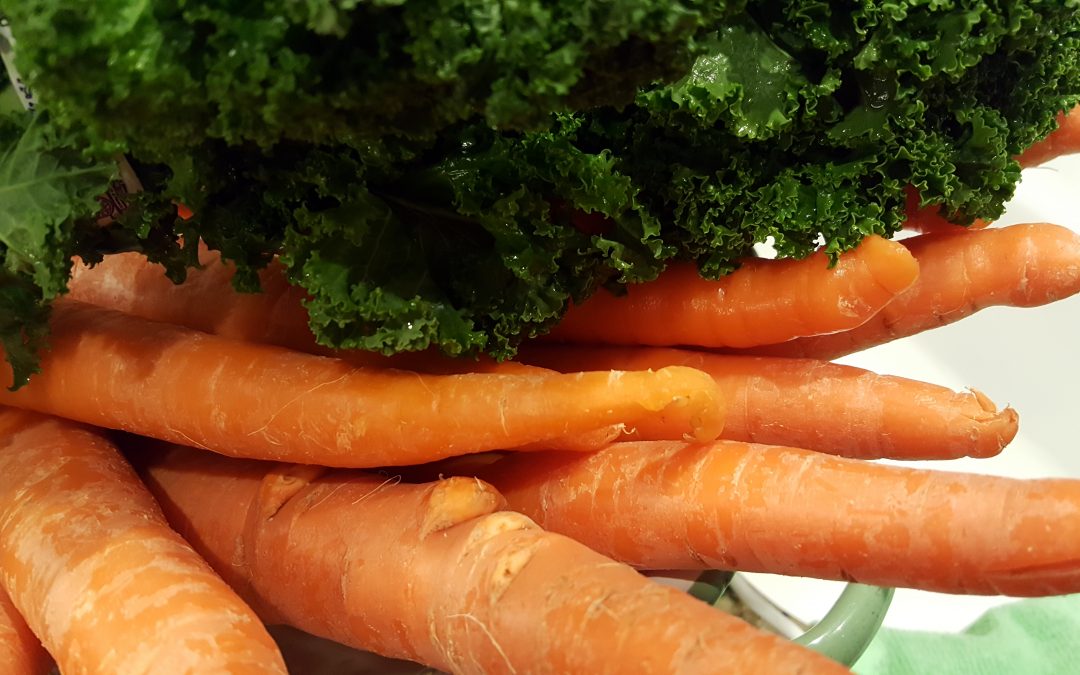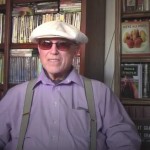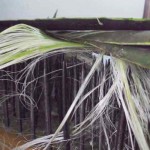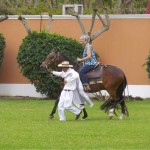

For the mere price of one dollar, how could anyone pass up a used book with such an enticing title? For a money-challenged graduate student, How to Make Cheap Wine was a roadmap to a continuous flow of low-cost nectar of the gods. How hard could it be? After all, Neolithic man made wine, without the aid of a recipe from a second-hand book. With a little study and preparation, I might be able to produce the same results as illiterate, ancient cave-dwellers.
The Path to Writing
 The Path to Writing
The Path to Writing
Check out my new YouTube video, Interview with Howard Feigenbaum, produced by fellow author Jim Hitt. In this video I discuss my decision to become a writer and offer advice for those who wish to become writers.
Work – a tale of perfomance.
 Work – and how performance tells a tale.
Work – and how performance tells a tale.
photo of shredding agave – Manta, Ecuador
The job doesn’t matter. It’s how the character performs the work that tells a tale.
I love professional waiters. They make the dining experience worthwhile. Knowledge of food and drink is important. Knowledge of people is even more important. For me, excellence deserves respect. Mediocrity does not. We all have our opinions about how people behave. I think most of us would usually agree on issues of good and bad. When words describe the behavior, we can share the vision.
I had the pleasure of visiting Montecristi, Ecuador, the home of the Panama hat. The manufacturing process is low tech. Leaves of the agave plant are shredded to get the fibers for weaving the hats. The quality of the fibers determines the quality of the hat. The people who made the hat I bought were proud of their product. I think of the hat’s beauty every time I wear it. And, in the third volume in the Benny Golfarb series, when I relate the adventure in Ecuador, the hat and the native people in the mountains above Manta, will shape the writing.
Food – “Tell me what you eat…”
 Food - what the locals are eating.
Food - what the locals are eating.
photo of picarones cart in Mira Flores, Lima, Peru
“Tell me what you eat, and I’ll tell you what you are.” Frenchman Brillat-Savarin believed that food had its own story to tell. I agree. Writing, travel and food come together in providing a snapshot of a culture. Eating what the locals eat is the first step in appreciating who they are.
Benny Goldfarb, Private “I” has descriptions of what characters are eating in Colombia. My colleagues often tease me about a chapter making them hungry. That is an unfortunate side effect. I believe that by sharing the same cuisine, I move toward greater cultural appreciation. Speaking the same language also has a similar result. There are concepts couched in speech that have cultural nuances.
What might a citizen of Lima feel on a weekend afternoon in Kennedy Park when enjoying freshly-made picarones, a doughnut-like treat? There’s one way to find out—get in the line at the kiosk, and wait your turn. You will know what generations of Peruvian parents and children have relished.
Inside a Book’s Main Character: A Jewish Detective.
 Looking Inside a Book’s Main Character.
Looking Inside a Book’s Main Character.
Is Benny Goldfarb, the protagonist in Benny Goldfarb, Private “I”, a Jewish character or a character who happens to be Jewish? He is a man with a moral sensibility and an appreciation of how that happened.
In writing, characters demonstrate who they are through behavior and their reaction to events. In general, we don’t know the religion of the protagonists in the books we read. However, when someone has a name like Benny Goldfarb, an assumption occurs. If the reader makes that assumption, why not satisfy the curiosity—not as the focus of the work but as an interesting detail.
Why should the majority of detective/action/adventure characters have Anglo-Saxon or French names? In this case, Benny Goldfarb is an American who works as a private investigator. In truth, he cannot escape the perception of his ethnicity. In the story, his thoughts and feelings are shaped by his tradition and religious beliefs.
A visit to the Palace of the Inquisition in Cartagena, Colombia transforms Rosa Zuleca, the main female character, when she confronts the effects of the Spanish Inquisition on her family. Although this theme is a subplot, it adds depth to the story by introducing a setting where history, injustice and an individual’s identity meet.
When a horse is not a horse.
 History and Tradition – photo of Paso Fino
History and Tradition – photo of Paso Fino
When is a horse not a horse? When it’s a Paso Fino. Peruvian respect is profound for a breed of horse unique to the nation. The small, sturdy, smooth-gaited horse improved travel over long distances in mountainous terrain. Hacienda owners loved the Paso Fino. Why is this notable to me as a writer? The animal is a physical representation of social class. If I write about Peruvians, I should consider where someone fits in the power and economic structures of the country. The issue is part of the realistic detail that benefits the believability of fiction.
James Michener, in Hawaii, does that very thing. The development of his characters occurs within the context of where they fit in a tribal society meeting the modern era. The writer can show who characters are, not only by what they say and feel, but also by their social position.
Experience – the effect of Cape Horn.
 Experience - photo of Cape Horn
Experience - photo of Cape Horn
What’s it like to round the Horn? For me, the experience was extreme. In the space of two hours, there was rain, hail, high winds, snow and sunshine. How did this affect me as a writer? I understand why the Bounty’s crew mutinied. In the movie, Captain Bligh informs the crew that he is taking them back to England by way of Cape Horn. The crew protests, “No, not the Horn!” Shortly after, they seize the ship and turn back to Tahiti. After experiencing the Horn, I would have joined them. Who wouldn’t? Half the ships rounding the horn foundered on the rocks. Their descendants inhabit southern Chile.
Nordhoff and Hall, the authors of Mutiny on the Bounty, traveled to Tahiti. The story benefited from their experience. Their research included perusing Captain Bligh’s journals, the ship’s log and historical accounts. The rich detail in a work of fiction is a thing of beauty.
The Geography of writing.
 Geography – photo of Ecuador
Geography – photo of Ecuador
Everyone has to be somewhere. Is that too obvious? Not to me as a writer. I feel an obligation to help the reader imagine the setting. The geography affects the ease or difficulty of movement. The flora, fauna and weather contribute to a sense of environment.
The Andes shape the use of South American countries. They are a barrier running down the interior of the nation. If you are wealthy, the range is something to be flown over. If you are not-so-rich, the bus trip can take days, or longer if landslides block the road. The isolation of the Incas and other native groups helped them evade the Spanish conquest. Native cultures still flourish at high altitudes. In Benny Goldfarb, Private “I”, the protagonists travel into the interior of Colombia. The detail of the story almost demanded the inclusion of a native group. In this case, the Paez tribe provides another point of view in Colombian society.
